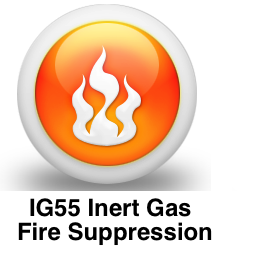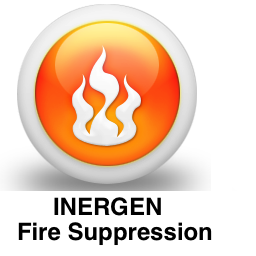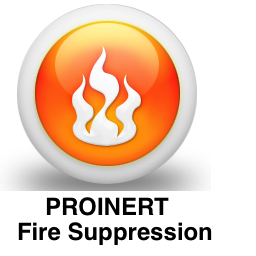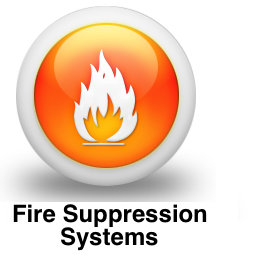INERT GAS FIRE SUPPRESSION
Home > Fire Suppression > Inert Gas Fire Suppression







What is an inert gas?
Inert Gases are naturally occurring gases. We are surrounded by inert gases. The air we breathe is filled will them. These are not man made or fossil gases.
How do Inert Gases work as a fire suppression system?
The air we breathe has approximately 21% of Oxygen. Oxygen is the key factor in sustaining a fire and the key factor in keep us alive too!
By removing the oxygen, we will certainly extinguish a fire, but that comes with obvious problems. How do we sustain life at the same time?
Fires need more than 15% Oxygen to combust. Anything below this level of oxygen will not be enough for a fire to sustain combustion.
Luckily, we only need 12% plus of oxygen to survive and this is where the answer lies. To extinguish a fire and sustain life, we need to reduce oxygen from 21% (assuming were at sea level) to below 15%, but not less than 12%. This will extinguish a fire and sustain life at the same time.
What happens if we reduce Oxygen levels to below 12%?
Shortness of breath
This is a dangerous game! By reducing oxygen to below 12%, we induce all sorts of problems to our respiratory system. We will experience shortness of breath as our blood oxygen saturation falls, this will become more pronounced over time and will affect us even when we're at rest.
Fatigue
We will begin to experience fatigue feeling far more tired than normal, possibly feeling exhausted,
Cognitive Disturbance
When our bodies are starved of oxygen, we may begin to experience confusion, uncertainty and disorientation
Headaches
Head aches will become apparent as our brains are starved from this essential element of the air we breathe
If the oxygen levels drop even further than 10%, then the symptoms become far more severe, often with life threatening circumstances.
It is imperative that the fire suppression system is designed correctly!
Inert fire suppression gases are often blended for buoyancy. For example IG55 is a mix of Argon and Nitogen and Inergen (IG541) is a mix of Argon, Nitorgen and CO2.
Inert Gas Fire Suppression systems are commonly found with the following blends and names:-
Inergen fire suppression - IG541
Inergen fire suppression agent is made up of 50% Argon, 42% Nitrogen and 8% Co2. The Co2 in this blend helps us absorbe oxygen into our blood cells. By doing this it decreases the risk of the symptoms described above.
Co2 is also known to increase our heart beat rate and also induce hyper ventilation. This gas clearly suggests an advantage over the other inert gas fire suppression systems, but there is a down side to this.
If the protected space is filled with toxic bi-products of combustion, the hyper ventilating will introduce more toxins and increase the risk of other side effects.
Argon/nitrogen fire suppression - Commonly known as IG55 fire suppression
IF55 fire suppression is a balanced mix of 50% Argon & 50% Nitrogen. The fire suppression agent provides good buoyancy, which keeps it in the protected space for longer, thus optimising the suppression period.
Contact us details - Click here